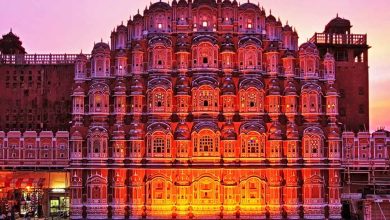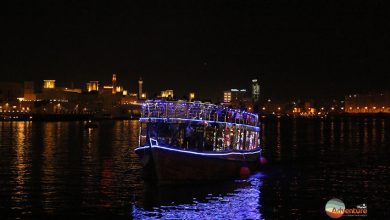10+ Curiosities About The Milan Cathedral, The Largest Church In Italy

Make the most of your visit to Milan Cathedral by learning some fascinating and entertaining facts about it. Kids’ and adults’ information about the Milan Cathedral.
The most renowned structure in Milan and one of Italy’s most recognizable sights is the cathedral, or Duomo di Milano as it is known in Italian.
These amusing and intriguing facts about Milan’s cathedral will make your visit more enjoyable. It is a structure with a remarkable look and an intriguing history.
Here are 10+ Curiosities About The Duomo Milan Tour, The Largest Church In Italy:
1. The Name
Milan’s cathedral, often known as “Il Duomo,” is a place of worship dedicated to the Nativity of the Virgin.
The famed Madonnina, the golden figure of Mary that serves as the emblem of Milan, is located at the very top of the cathedral since its official name is Santa Maria Nascente.
2. The Architecture of Milan Cathedral
The Gothic architecture of the Duomo Milan Tour is one of the best examples in all of Italy, and it has been greatly affected by the design of Northern European churches, particularly those in France and Germany.
It is simple to discern the contrast in carving proportion and style when compared to other outstanding examples of Italian Gothic architecture, such as the Cathedral of Siena or Orvieto.
3. The Construction
The construction of the Duomo Milan began in the late 1300s, and it was formally opened in the early 1400s. Unfortunately, not all of its components were finished at the time, and in the XIX century, the building was still ongoing under Napoleon!
Bishop Antonio da Saluzzo initiated the church’s construction, while Gian Galeazzo Visconti, one of Milan’s most illustrious tyrants, assisted with both ideas and financial backing. He wanted the cathedral to stand out from all the other buildings in Milan, therefore he used the unusual white Candoglia Marble from the Lake Maggiore region as the building material. One of the reasons why construction at the duomo is still going on today is due to the marble’s delicate nature and white tint with pink undertones.
Also Read: Explore the Best Places in the World
4. The Feminine Touch
The Duomo Milan was constructed on the ruins of two earlier churches that were also dedicated to female deities: Santa Tecla and Santa Maria Maggiore, as well as a former religious sanctuary for a female Celtic deity named Belisama.
The church preserved this feminine link even if the paganic temple is no longer in use by using the image of the Virgin Mary, in keeping with a pattern also found in other Christian structures.
5. The Size of Milan Cathedral
The scale of Milan Cathedral is one of the most fascinating and astounding facts about it. One of the largest Christian churches in the world and the largest gothic cathedral ever built is Milan’s cathedral. It includes more than 35 pillars, 5 naves, and a central nave that is 45 metres tall, 156 metres long, 11,700 square metres in size, and can hold more than 40,000 people.
The duomo includes 55 magnificent stained glass windows with intricate representations of biblical stories and parables.
6. The statues in Milan Cathedral
Incredibly detailed statues of human and heavenly beings, as well as gargoyles, decorate its façade. It has an extravagant aspect that is typical of the gothic style, with approximately 4000 figures and 135 spires, according to reports.
The sculptures have a variety of aesthetics, and some of them are very notable and intriguing. Among the most well-known are carvings of boxers, sports equipment, Napoleon, and the Statue of Liberty from New York City.
7. The Bible Connection
One of the nails from Jesus’ crucifixion is reported to have been kept in a reliquary in the cathedral.
The nail was moved to the Duomo in 1461 from the Santa Tecla Church, where it had previously been preserved. The location of the nail on the cathedral apse is indicated by a red light. A strange rite called “Nivola” centres upon the nail, which is displayed to the faithful throughout the ritual.
The ‘Nivola,’ a unique device used to raise the nail from its safe place to eye level for the faithful to view, is the source of the ritual’s name, which at least goes back to the XVI century.
8. The Sundial
The Brera Academy’s astronomers built a precise and still-visible sundial for the church in 1768, which was used to regulate the city’s time. The Brera Astronomical Observatory’s Giovanni Angelo de Cesaris and Guido Francesco Reggio created the Cathedral sundial in 1786, which is embedded into the floor parallel to the counterfaçade.
It is a long, gilded brass strip that goes along the left wall and is divided into the twelve zodiac signs.
It required several checkups and restorations over several centuries while being a perfectly functional watch and solar calendar. One of them was created in 1827 and was required due to the floor plan’s lowering. For the Royal Astronomical Observatory of Brera, astronomer Louis Gabba conducted a second test in 1929.
9. The Madonnina
The figure of Mary atop the Cathedral is known as Madonnina (lit. Little Madonna), and it is every bit as stunning as the rest of the building. The statue’s creation was chosen on June 17, 1769, and 156 books were used in her gilding. The Madonnina statue currently stands 4.16 metres tall, and her final gilding is made up of 6750 sheets of pure gold and 33 copper plates.
Her skeletal support system weighs 584,800 kg, and the slabs themselves weigh 399,200 kg. The cathedral in Milan’s Little Madonna is rather large. She has a spire in her right hand that is more than simply a symbol of her authority. Do you also
10. The Organ
There is a magnificent organ in the cathedral in Milan. constructed in 1938 by Mascioni of Cuvio and Tamburini of Crema. The organ is outstanding in terms of appearance, sound, and size.
It is the largest church organ in Italy and among the largest in the world thanks to its 15,800 pipes, which range in height from a few centimetres to almost nine metres, 5 consoles with 12 keyboards, 180 registers, and over 3000 combinations.
11. The Zodiac Signs
Many artefacts and pieces of art may be found inside Milan’s Duomo, the enormous marble cathedral that stands watch over the city. You won’t anticipate seeing the astrological signs on the cathedral floor, though. The zodiac signs are located on the ground, extending from one end of the marble floor to the other.
Tourists are surprised by this because there are no religious overtones to the zodiac. The signs run down a metal strip embedded in the floor and are written in black on white marble. This sundial is the biggest in all of Europe and served as a meridian. Late in the eighteenth century, it was planned. The meridian is illuminated by sunlight that enters via a hole in the roof. Sunlight is present during the solar noon when it is.
The current astrological sign is illuminated by the sun at noon. The city’s clocks could formerly be set using the sundial’s accuracy. Due to changes in the Earth’s axis, it is no longer as accurate as that. For a century, the Italians utilised this meridian as their main point of reference for time and astronomy.




